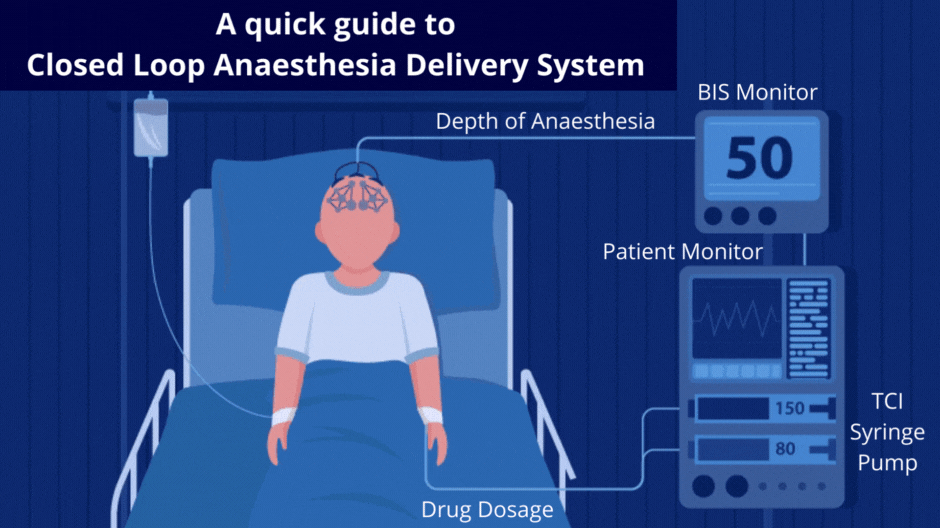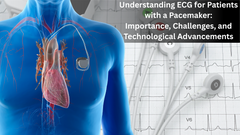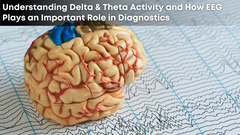A quick guide to Closed Loop Anaesthesia Delivery System
Closed-loop anaesthesia delivery systems have revolutionized the field of anaesthesiology by integrating advanced technology and real-time patient monitoring. These systems automate the administration of anaesthesia, ensuring precise dosing and personalized care. In this article, we will delve into the functioning of closed-loop anaesthesia delivery systems, explore their advantages, and examine their impact on patient safety and clinical outcomes.
Functioning of Closed Loop Anaesthesia Delivery Systems
Closed-loop anaesthesia delivery systems operate on a continuous feedback mechanism that monitors a patient's vital signs and adjusts the anaesthetic dosage accordingly. The functioning of these systems can be summarized in three key steps:
- > Data Collection: Advanced sensors gather real-time data on a patient's physiological parameters, such as heart rate, blood pressure, oxygen saturation levels, end-tidal carbon dioxide levels, and depth of anaesthesia. This data is continuously fed into the closed loop system for analysis.
- > Data Analysis: The closed loop system employs sophisticated algorithms, often incorporating artificial intelligence (AI) and machine learning techniques, to process and interpret the collected data. The algorithms assess the patient's physiological response to anaesthesia and determine the dosage required to maintain optimal anaesthetic depth and vital sign stability.
- > Dosing Adjustment: Based on the analysis, the closed-loop system automatically adjusts the anaesthetic delivery parameters, including infusion rates and anaesthetic concentration, to maintain the desired anaesthetic effect. The system constantly reassesses the patient's condition, making real-time modifications to achieve the desired depth of anaesthesia, while minimizing the risk of over or under-medication.
Advantages of Closed Loop Anaesthesia Delivery Systems
Closed-loop Anaesthesia Delivery Systems offer several advantages over Inhalational Anesthetics. These include:
- > Precision and Safety: Closed loop systems offer precise control over anaesthesia administration, ensuring accurate dosing tailored to individual patient needs. By continuously monitoring vital signs and adjusting the dosage accordingly, these systems minimize the risk of under or over-medication, enhancing patient safety during procedures.
- > Individualized Patient Care: Each patient responds differently to anaesthesia, and closed-loop systems address this variability by personalizing anaesthetic delivery. These systems optimize anesthesia administration by considering patient-specific factors such as age, weight, medical history, and drug interactions, resulting in improved outcomes and reduced complications.
- > Reduced Workload and Increased Efficiency: Closed loop systems automate certain aspects of anaesthesia delivery, reducing the workload on anaesthesiologists. By freeing up their time from manual adjustments, monitoring, and documentation, anaesthesiologists can focus on critical decision-making, enhancing efficiency and better patient care.
- > Real-time Monitoring and Alerts: Closed loop systems provide continuous real-time monitoring of vital signs, promptly alerting anaesthesiologists to deviations from the expected range. This early detection allows for timely intervention and minimizes the risk of adverse events, ensuring patient safety throughout the procedure.
Impact of Closed Loop Anaesthesia Delivery Systems
CLADS offers several advantages over traditional inhalation anaesthetic agents. Some of these advantages include:
- > Improved Patient Outcomes: Closed-loop systems improve patient outcomes by delivering precise and individualized anaesthesia. By maintaining optimal anaesthetic depth and stability of vital signs, these systems reduce the risk of complications, postoperative cognitive dysfunction, and shorten recovery times. Ultimately, this leads to better patient satisfaction and faster postoperative rehabilitation.
- > Enhanced Safety and Reduced Adverse Events: Closed loop systems significantly reduce adverse events related to anaesthesia administration. By automating dosage adjustments based on real-time patient data, these systems minimize the chances of over-sedation, respiratory depression, and cardiovascular instability. The result is a safer anaesthetic experience for patients.
- > Standardization of Anaesthesia Practice: Closed loop systems help standardize anaesthesia practice by providing consistent and evidence-based dosing. By incorporating best practices and real-time data analysis, these systems mitigate the influence of human factors, such as variation in anaesthesiologist expertise and fatigue, leading to more consistent and predictable outcomes.
- > Research and Quality Improvement: Closed-loop anaesthesia delivery systems generate vast amounts of data that can be used for research, quality improvement initiatives, and clinical audits. By analyzing this data, healthcare providers can gain insights into patient responses, identify patterns, and refine anaesthesia protocols, advancing the field and study of anaesthesia and improving patient care.
Final Thoughts
Closed-loop anaesthesia delivery systems have transformed the practice of anaesthesiology by combining advanced technology, real-time monitoring, and automated dosing adjustments. These systems provide precise, individualized anaesthesia, resulting in improved patient safety, better outcomes, and enhanced efficiency. As research and technological advancements continue, closed loop systems hold the potential to revolutionize anaesthesia care further and contribute to the continued improvement of the field.












